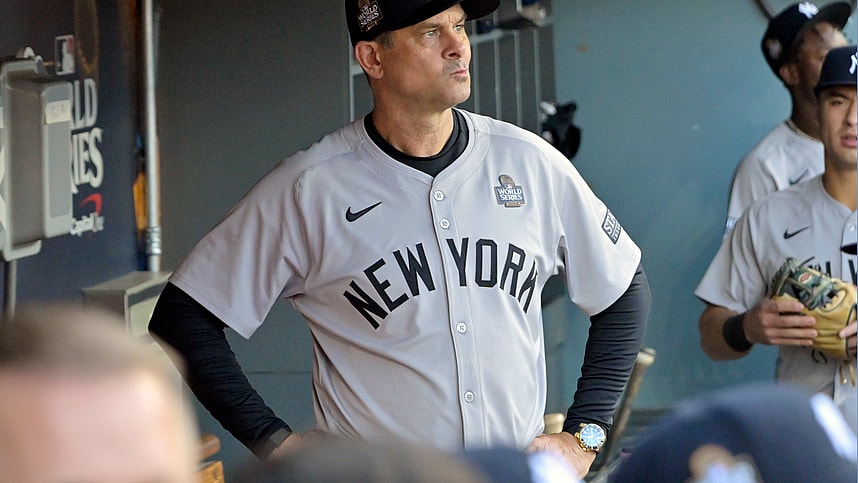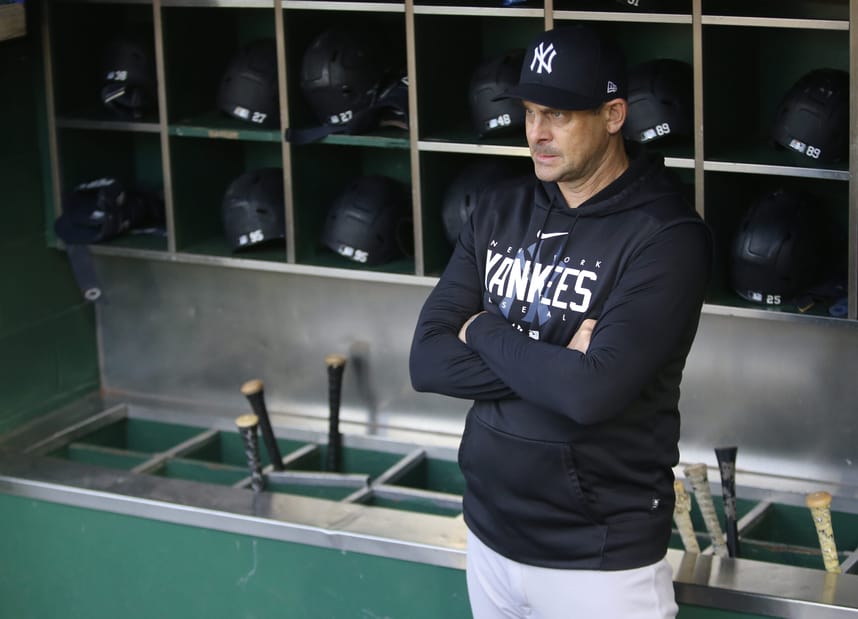
The New York Yankees fell to the Los Angeles Dodgers in Game 1 of the World Series, with the loss largely pinned on Aaron Boone’s decision to bring in lefty starter Nestor Cortes during the most crucial moment of the season. Boone’s choice to rely on Cortes, who hadn’t appeared in a game since September 18, posed a significant risk—one that ultimately led to disaster.
“Just taking the left-on-left matchup there. No, I didn’t deliberate long”
The Yankees Made a Huge Mistake
Cortes’s last official outing was over a month ago against the Seattle Mariners. Although he’s thrown in a few simulated games, Cortes had not pitched in a high-stakes situation during the playoffs, making Boone’s decision to bring him in against some of the best batters in the league a gamble. Cortes threw just two pitches—both fastballs in dangerous locations—before things unraveled.

The first pitch, a high fastball to Shohei Ohtani, was nearly disastrous. Ohtani missed it, resulting in a popup down the third-base line, where Alex Verdugo made an incredible catch, crashing into the stands. However, the Yankees weren’t so lucky with Cortes’s next pitch.
Freeman Capitalizes on Boone’s Strategic Misstep
With one out, Cortes faced Dodgers’ star Freddie Freeman, who had been hitting .287 with a .481 slugging rate against fastballs this season. Cortes pitched inside to Freeman with a 93 mph fastball—a choice that led to historic consequences. Freeman didn’t miss, launching a walk-off grand slam into the right field stands, marking the first grand slam in World Series history to end a game.
The strategic mistake here was evident. If Boone planned to leverage a lefty pitcher, using Tim Hill, who had already pitched 5.2 innings this postseason with a 1.59 ERA, may have been a better choice. Hill’s 63.2% ground ball rate and low walk rate made him a far more reliable option against left-handed batters in this critical situation. However, Boone gambled on Cortes’s talent instead, and it backfired in a monumental way.

The Risks of the Matchup Game
Boone’s decision reflects the high-risk nature of playing the matchup game in a loaded-bases situation. While he aimed to neutralize the Dodgers’ left-handed bats, Freeman’s solid track record against both lefties and righties meant he was always a threat. Freeman’s .250 batting average and .427 slugging rate against left-handed pitchers this year were strong indicators that he could handle Cortes, even with a well-located pitch.
- Yankees News & Buzz: Aaron Boone discusses roster; why Yanks didn’t make an offer to Luke Weaver, more
- How acquiring Freddy Peralta turns the Yankees’ rotation into a World Series juggernaut
- Yankees manager says team still has unfinished business in the offseason
A Historic Misstep to Overcome
This decision marks a historic error Boone will have to live down, as the Yankees now must recover and refocus for Game 2 on Saturday night. If they can secure a win, they’ll head back to the Bronx with a tied series and a chance to regain momentum. However, a walk-off grand slam is demoralizing, and Boone’s tactical blunder in Game 1 has left the Yankees with a mountain to climb.
More about: New York Yankees